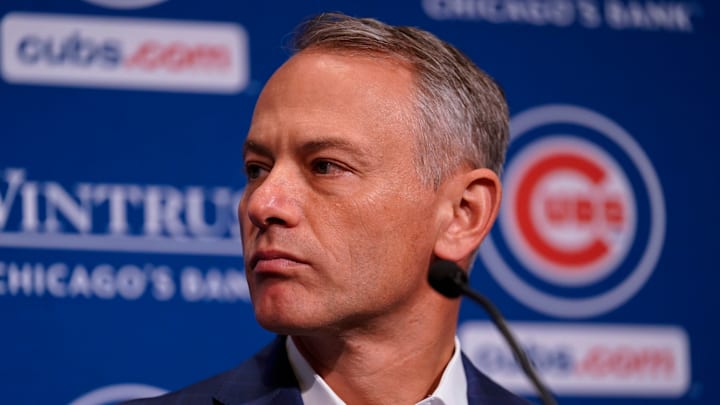The Chicago Cubs' offense has entered a new stratosphere this season behind the arrival of Kyle Tucker and the MVP-level breakout of Pete Crow-Armstrong. This team just couldn't score runs consistently last season. Now, Chicago might thump its way to the top of the National League.
With the World Series to clearly within reach, never has there been more motivation for Jed Hoyer to operate aggressively at the trade deadline. Tucker's upcoming free agency looms over the clubhouse, but Chicago needs to maximize this window and worry about the future in the future. They can't let Tucker scare them off of adding money to the payroll.
It's clear that Chicago's biggest need is rotation depth. With Justin Steele done for the season and with Shota Imanaga and Javier Assad on the IL, the Cubs' starting pitching is not up to par with their National League peers. The Dodgers' rotation will get stronger as it gets healthier. New York, Philadelphia and San Diego boast some of the very best pitching staffs in MLB.
So grave is Chicago's need on the mound that Hoyer might spring to action earlier than expected, per 670 The Score's Bruce Levine (h/t Bleacher Nation).
"I will say that the Cubs are certainly out there trying to fortify their pitching right now," Levine said. "And over the next two to three weeks, I think they’ll put a strong effort into trying to acquire a starting pitcher or two."
For more news and rumors, check out MLB Insider Robert Murray’s work on The Baseball Insiders podcast, subscribe to The Moonshot, our weekly MLB newsletter, and join the discord to get the inside scoop between now and the MLB offseason.
Cubs want to trade for a starting pitcher in the next 2-3 weeks
This is an unconventional strategy from the Cubs front office. The trade deadline isn't until the final day of July. That's almost two full months until the buzzer sounds. Generally, teams use as much time as possible to gather data, chart trends, and come to an internal consensus before pulling the trigger on a deal. There's a reason we get a flurry on deadline day every year, rather than weeks of trades trickling out all summer.
That does not mean Chicago will or won't adhere to tradition, as there are certain benefits to upgrading the rotation right now. The sooner the Cubs can land a pitcher, the more starts that pitcher (ideally) logs in a Cubs uniform. It could mean the difference between a division win and a Wild Card berth when the season wraps up.
We can't ignore the considerable downside, however. It's still early in the season. It's generally smart to wait a couple more months for research purposes. What if the Cubs trade for a pitcher tomorrow, only for his production to plummet over the next two months? Then Chicago emptied the clip and is stuck with a sunk cost.
The longer the Cubs wait, the more opportunities to see which pitchers trend up and down as the sample size of the 2025 campaign expands. It also decreases the odds of trading for a pitcher who gets hurt before the stretch run. If the Cubs drop the prospect bag on a talented pitcher and he gets hurt on July 7, it leaves Jed Hoyer in an impossible bind. Injuries are part of the game and never fully predictable, but again, there's a reason the deadline exists — and a reason teams usually wait until the very last moment to swing a trade.
Matybe the Cubs can get better value right now, but also, most opposing front offices will want to give it time for a broader market to materialize. So, there's a chance the Cubs end up overpaying. Maybe, just maybe, Hoyer should let this offense carry Chicago for another month and change before he gets trigger-happy on the trade front.
